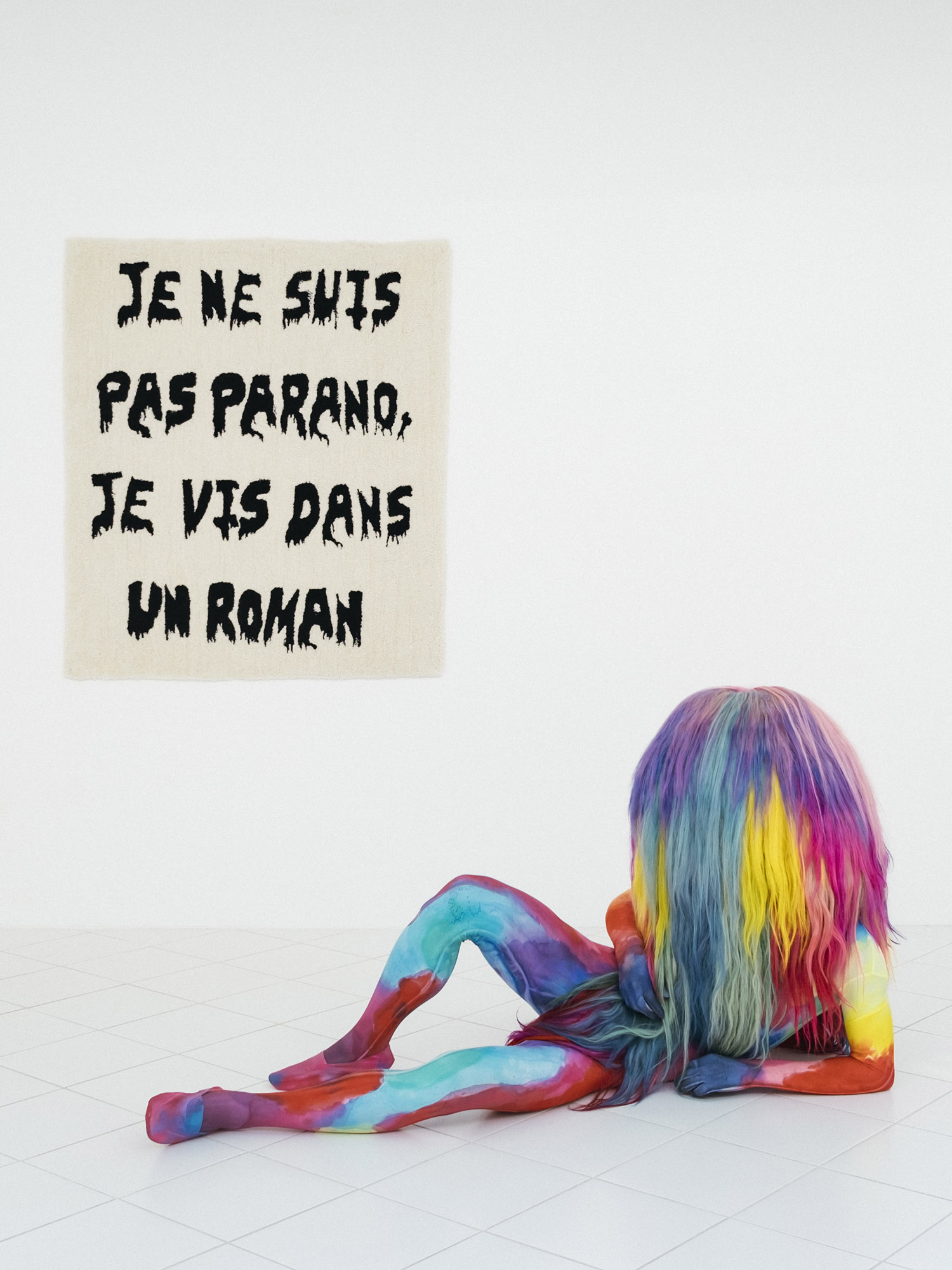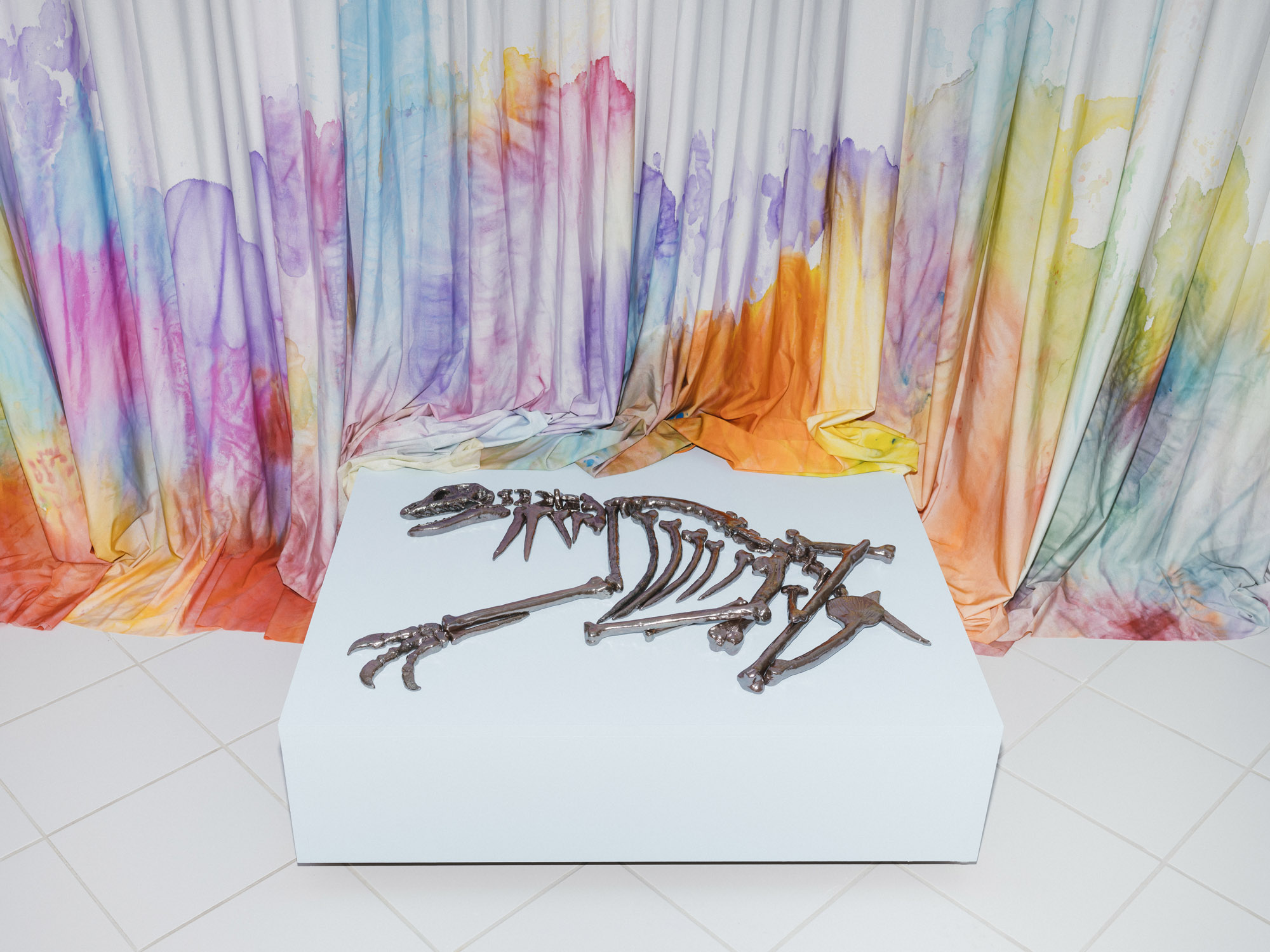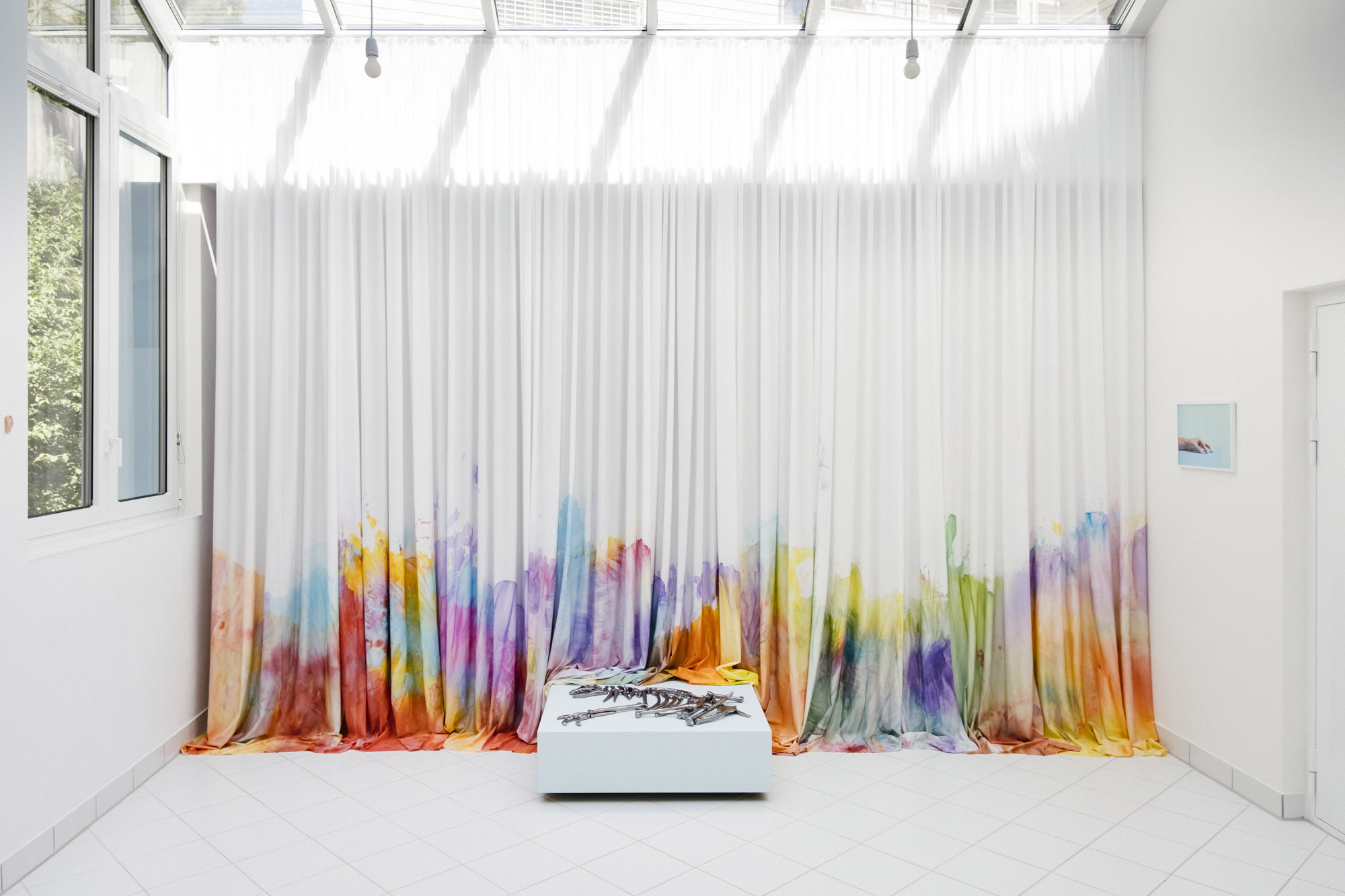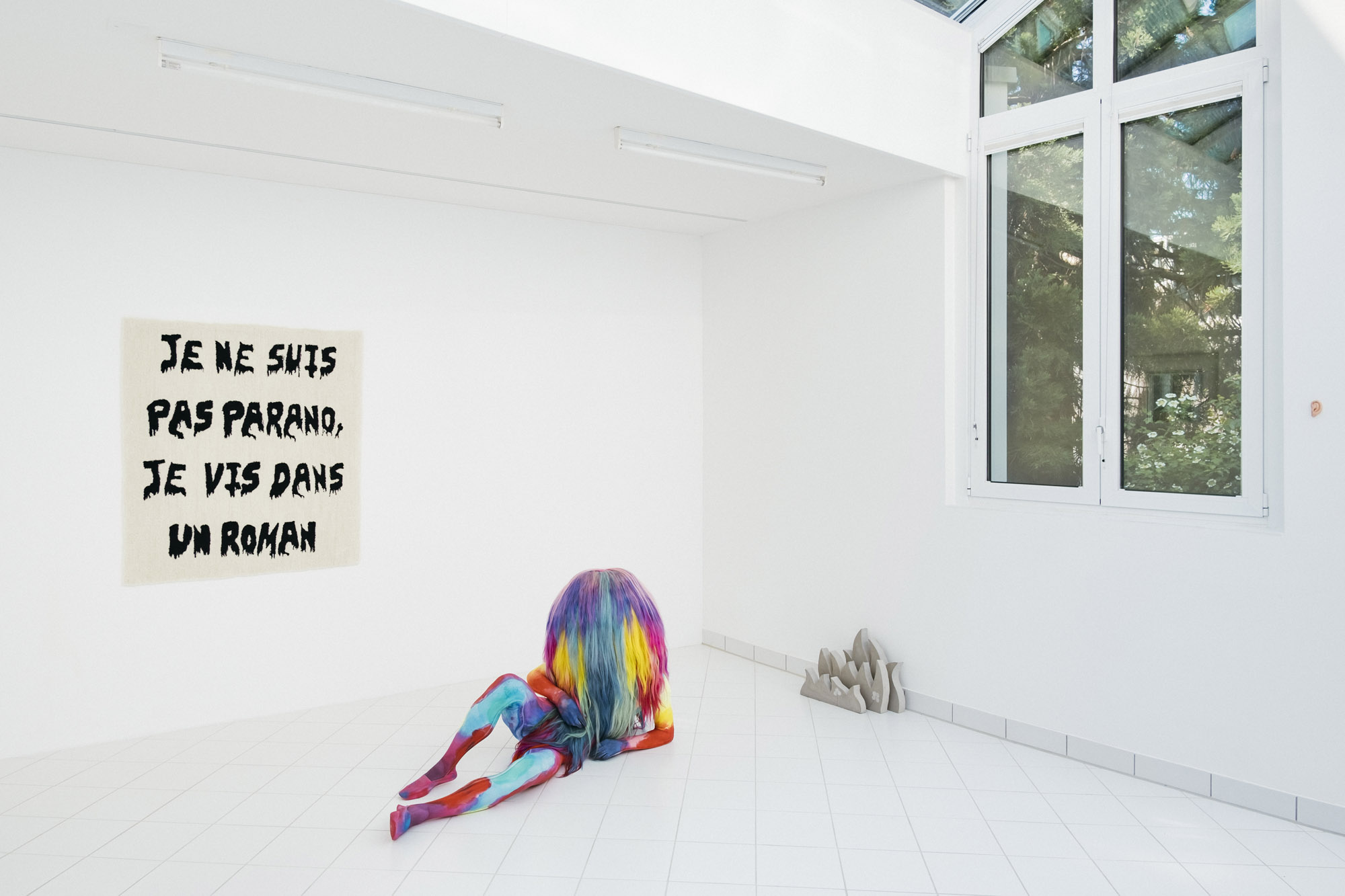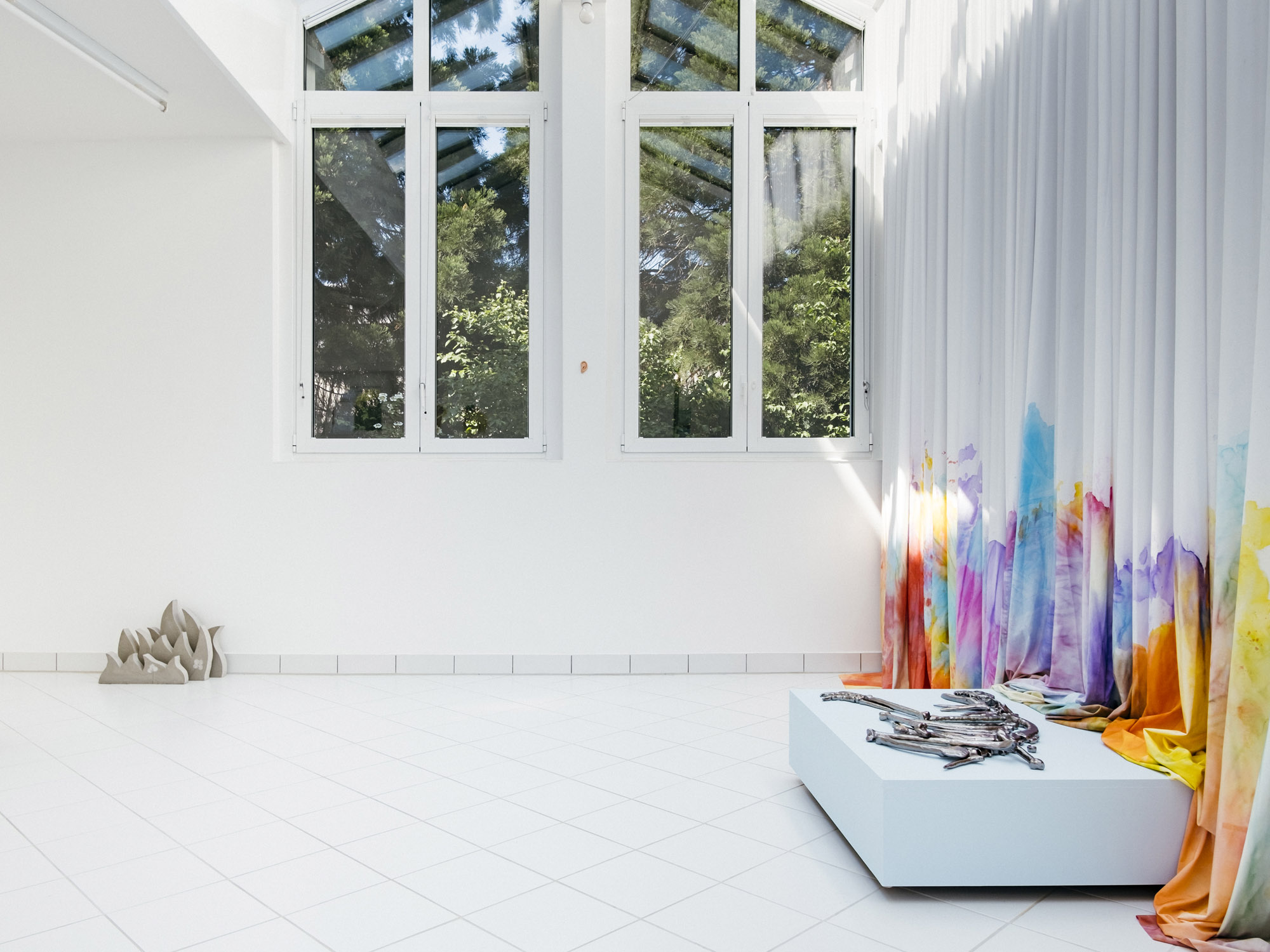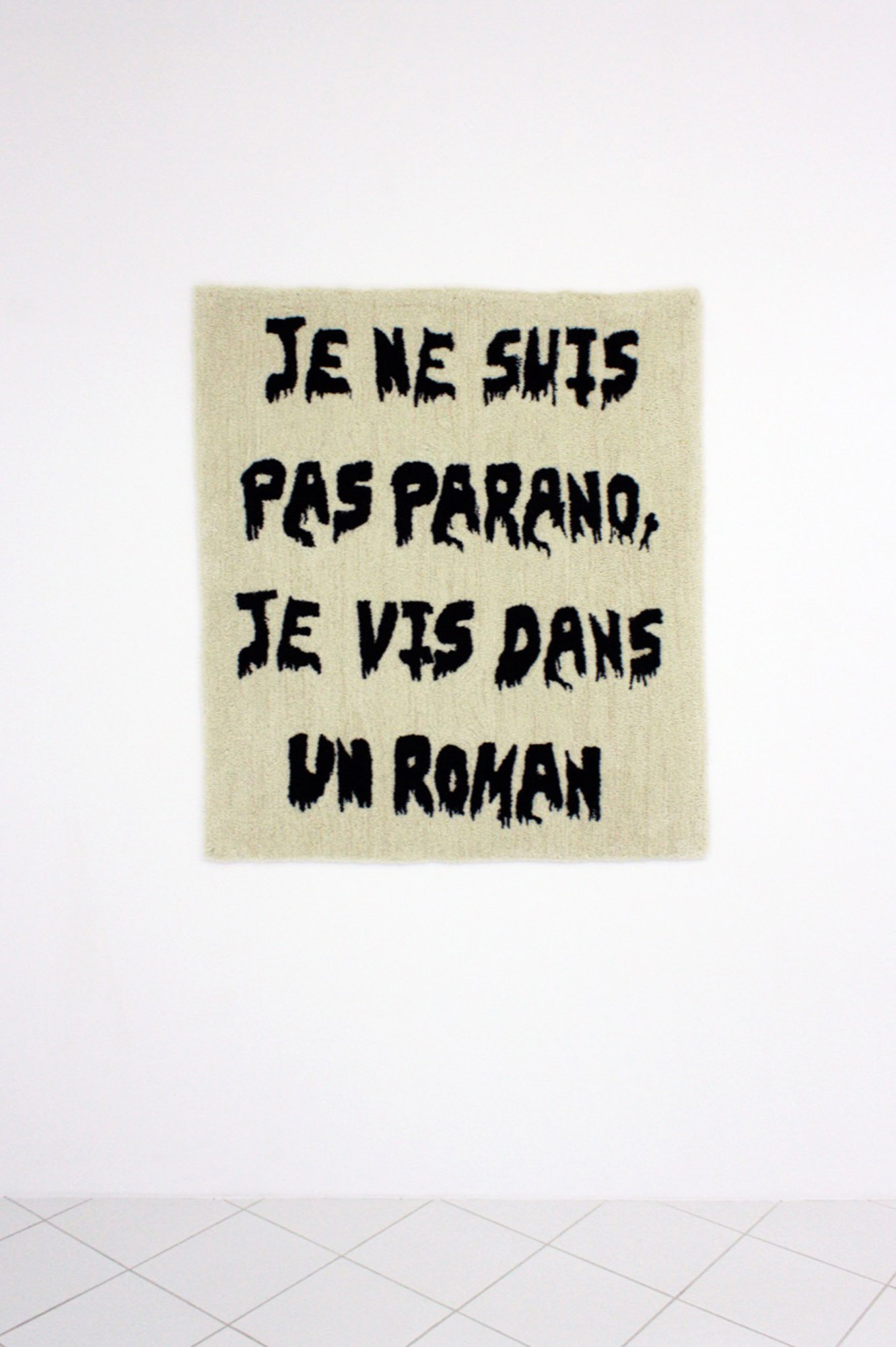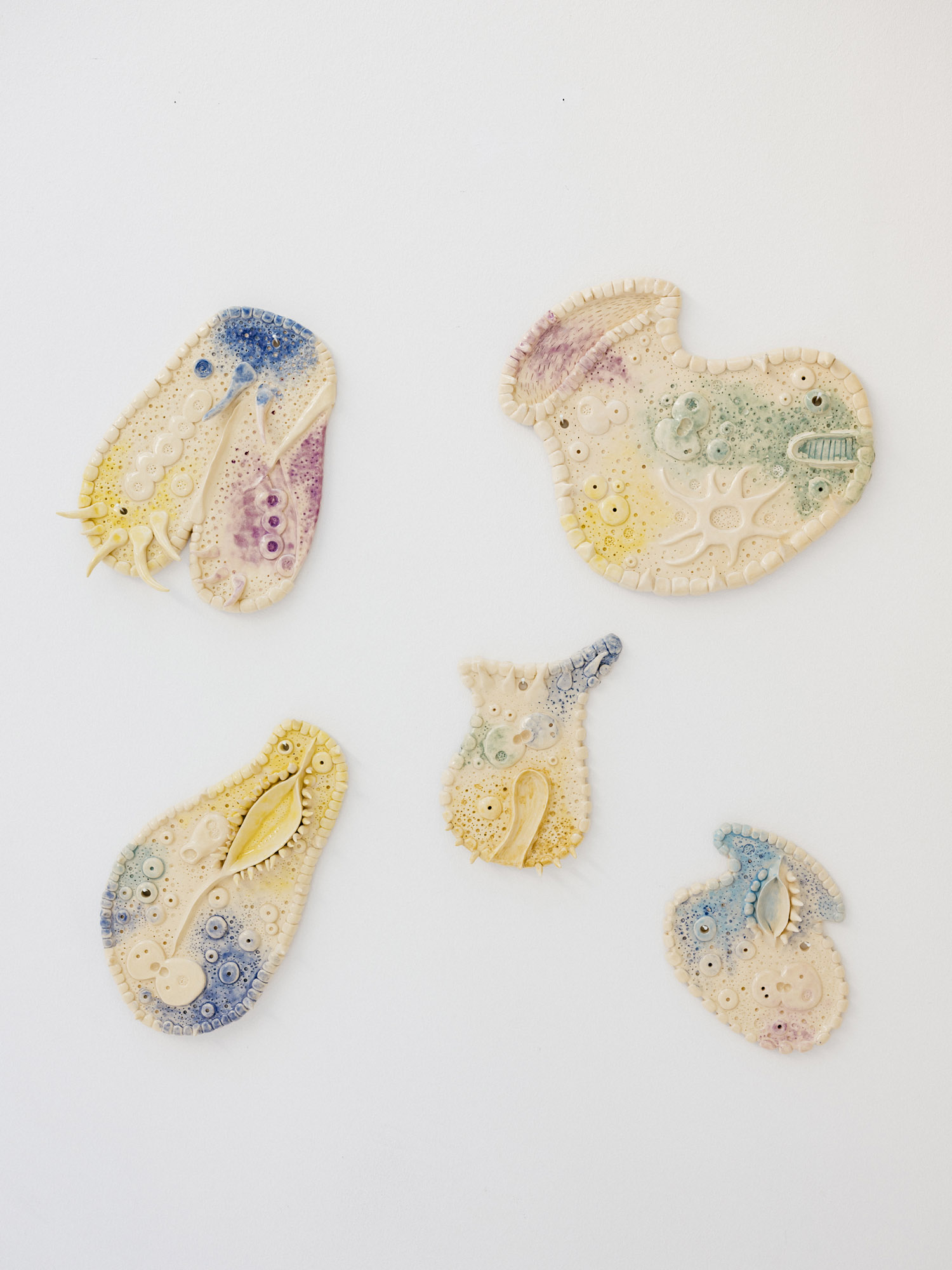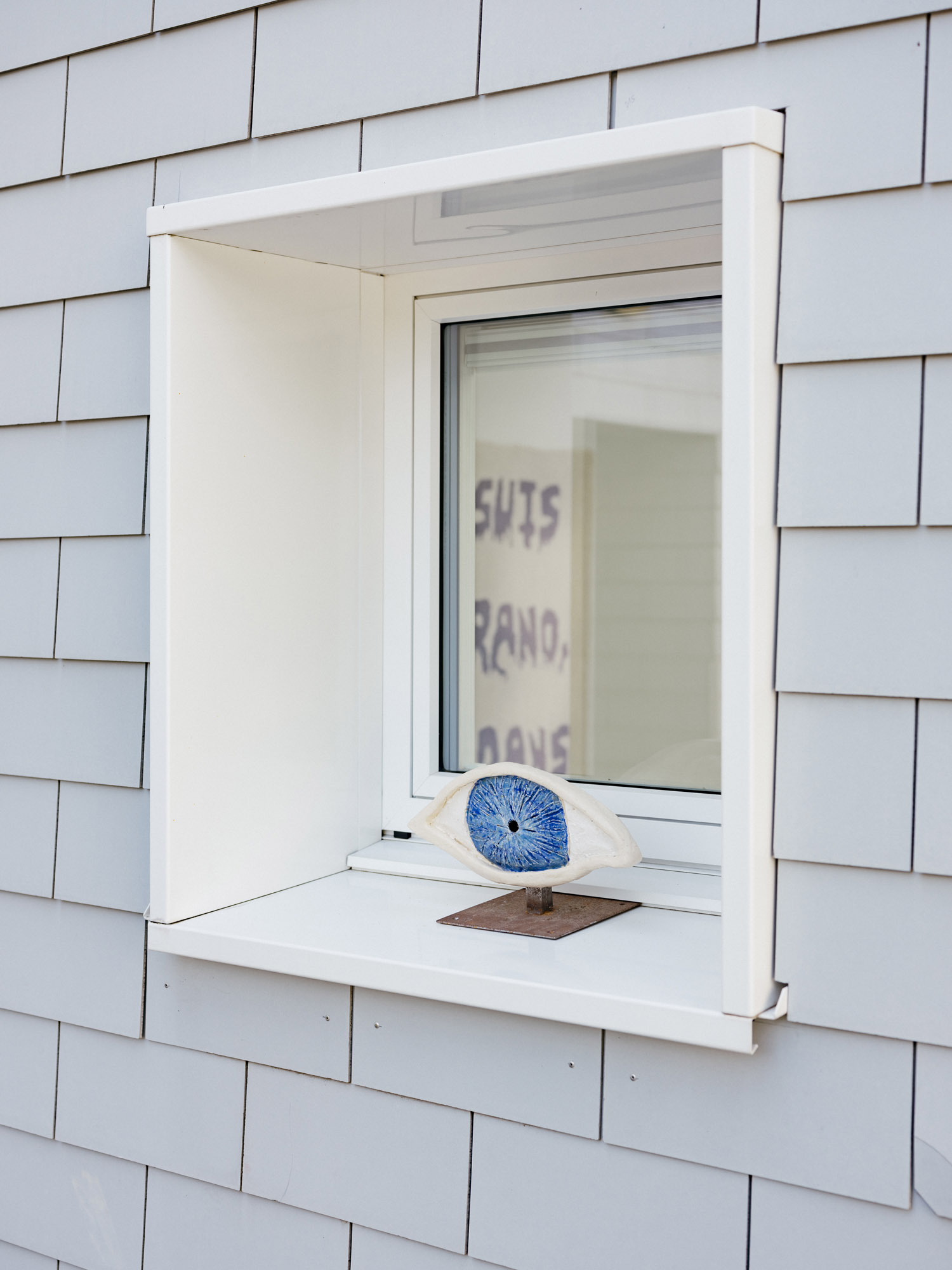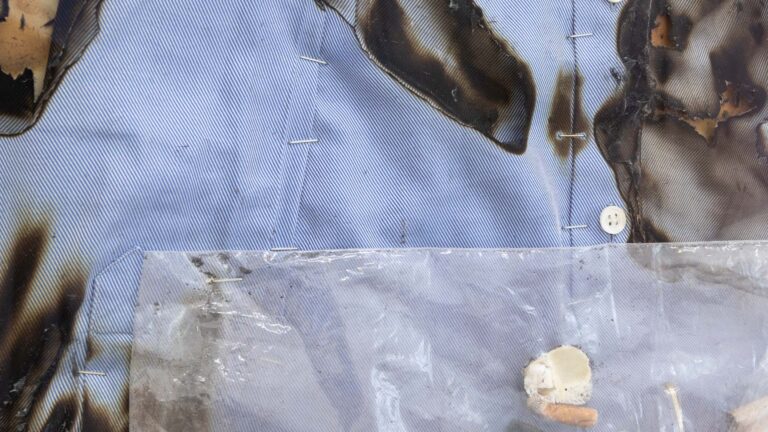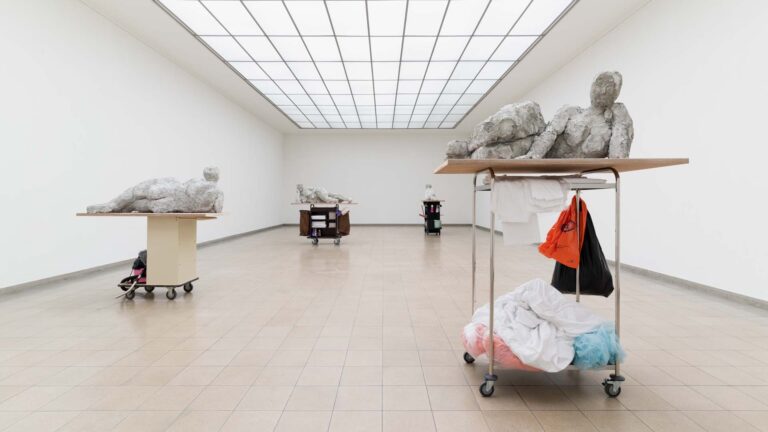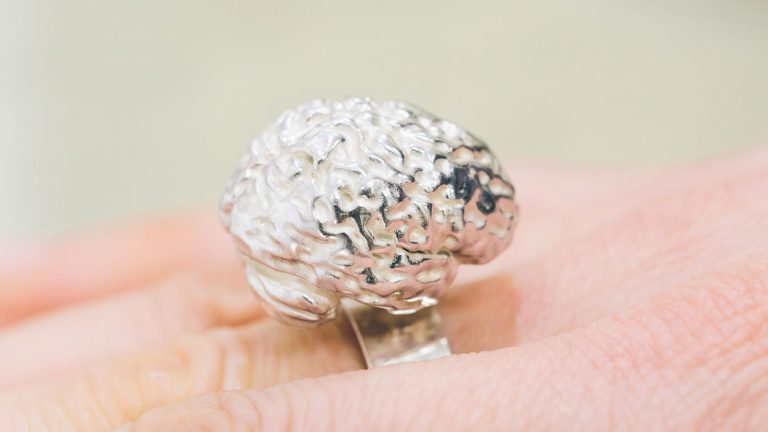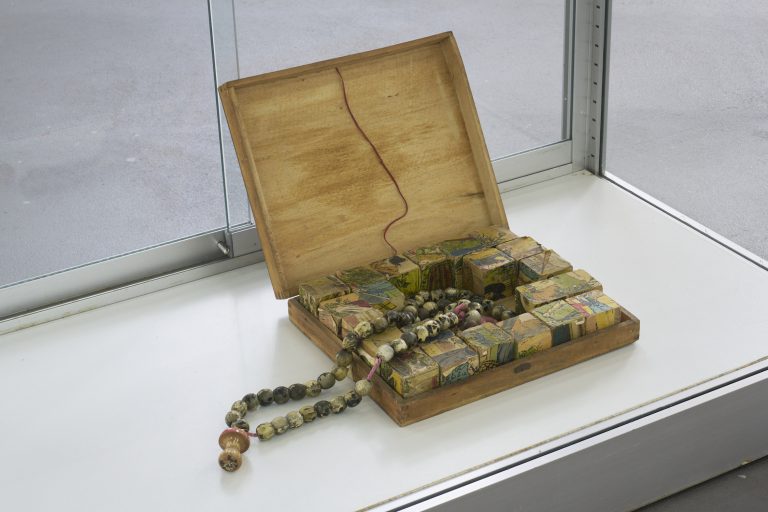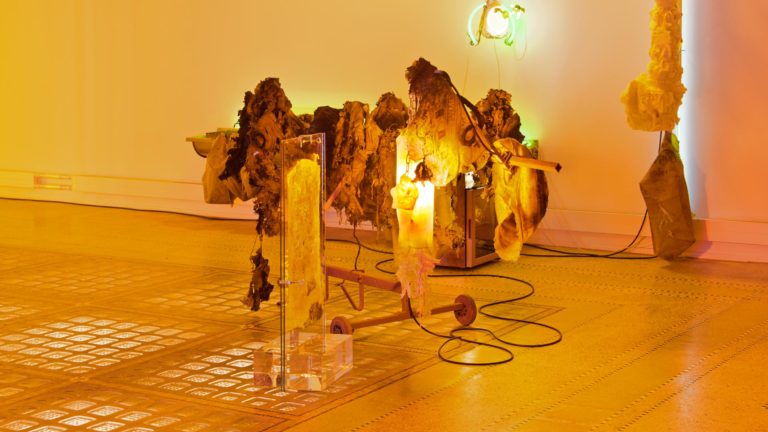Artist: Julie Monot
Exhibition title: Play Dead
Venue: A.ROMY, Zurich, Switzerland
Date: May 13 – June 30, 2022
Photography: all images copyright and courtesy of the artist and A.ROMY, Zurich
What a temptation to identify oneself with these stones, to melt into this burning and impassive universe.
Albert Camus, L’Été, 1954
With “Play dead”, Julie Monot proposes to penetrate a chemical and synthetic environment, a biotope of simulacrum and trickery. A variegated space-time frozen in an unstable and ephemeral expectation. The kinetic potential of the pieces is located in the tension of an imperceptible performativity. That of an inanimate “on the alert”, a latency of movement. Co-constructed in a fight against and with the matter, the pieces of the exhibition – simultaneously landscapes and characters – populate and compose a world of wild and playful artificiality.
What to see resides in this forged environment. Lying in an almost perfect immobility, the hairy character attracts our gaze with its vibrant colors. A WALL is part of its milieu. A colorful biotope climbing on the architecture, infusing the epidermis and hair of its inhabitants. In the manner of octopus, whose skin takes on the texture of the bottom of the seas to escape predators, What to see mutates with its container. Penetrated by the hues of its own décor, it camouflages itself in it. Roger Caillois (in Méduse et Cie, 1960) identifies three principal forms of mimicry and camouflage: disappearing (fading into the background), masquerading (encrypted impersonation of another entity), and intimidating (taking the form of a predator or toxic being). These three strategies have been defined by Andrea Mubi Brighenti and Alessandro Castelli as: becoming-furniture, becoming-another-one and becoming-monstrous[1].
The symbiosis between What you see and A WALL takes the form of a shared chromatic camouflage, disturbing the eye to deceive the senses. During the First World War, when radar detection was not yet in use, the British artist Norman Wilkinson painted warships with a multitude of contrasted shapes. In an “over-visibility”, the patterns were meant to mislead the enemy’s gaze. A confusion of perspectives prohibiting any anticipation of its movements named “dazzle camouflage” and which is found in the animal kingdom in zebras or tigers. Simultaneously furniture, another-one and monstrous, What to see stuns by its acid and sweet colors and mystifies us on its potential movement. Provoking a sensorial indecision, it plunges the viewer in a game of dupes. According to semiotician Paolo Fabbri, one of the etymologies of the term camouflage would be drawn from the root carmen, “charm”: “camouflage would be thus a spell thrown on things, so that they take a different sense from their usual meanings”[2]. He speaks of a “semiotic simulacrum”: camouflage as a constitutive and performative self-definition acting on imagination. It is what Vinciane Despret designates as addressed appearances [3]. Artificial chimera, What to see gives itself to be seen for better disappearing.
But the question raised by Julie Monot is perhaps a reversal: who is seeing whom? The public enters a space where attention is focused on objects, forms, beings that could only be waiting for our inattention to transform themselves into predators. Recalling the uncanny eyes appearing on certain butterflies’ wings, the sculptures of the exhibitions scrutinize us, ready to move imperceptibly. Without noise, without gestures, the beings evolve in an out-of-time, a suspended moment whose latency is stretched to the excess, ready to break from one moment to another. An exhibition as a stop, a pause not in the release but in the momentum of potentiality. A game of deceptive relaxation, of suspicious inertia. “Play death” or “apparent death” is a strategy, a behavioral role-play employed by animals. In an immobile state, the endangered or predator animal stops moving and take the appearance of death. A simulacrum masking a concentration of forces to flee or attack. A state of “tonic immobility” where all senses are in alert, scanning the environment to take advantage of an ephemeral moment of inattention from the enemy.
In the exhibition, the simulacrum takes shape in an artificial surrounding. Camouflage becomes viral in the contemporary biotope, a counterfeit, beautiful and tragic scenery. The living organisms disguise themselves, adapting to human artificiality. Plants freeze into mineral aggregates, temporary mutating to escape ecological extinction. Nature morphs into concrete as a form of adaptive “apparently dead” life. As if playing dead would have become necessary to survive in a threatened world. Mimicry as a vital theatrical strategy and a cyborg masquerade. “The word camouflage contains a theatrical element that stresses the precisely artificial, even baroque aspect of this natural process”[4]. Play death and camouflage are indeed considered as ones of the more creative and riskier tricks to escape predators.
Elsewhere in the exhibition, the glistening remnant of an already dead creature evokes the paleontological narrative of a past brought to life through fiction. Excavation of future matter discovered under geological strata, these counterfeit bones – fossils of an organo-robotic creature reminiscent of the scientific uchrony of steampunk – suggest a non-linear reading of time and the finitude of species and civilizations. The intact vestiges of a synthetic fiction on which our reflection appears. According to the researcher in speculative fiction Isabelle Boof-Vermesse, the figure of the dinosaur “refers to the power of nature, but also to the fear of the human being to fall in his turn in the dustbin of history, in front of the triumphant march of a virtualized and disembodied technology”[5]. This fear is actualized in our contemporary era, petrified of inaction in front of the climate catastrophe[6].
With “Play dead”, Julie Monot invites us to enter watchfully in an anxious and playful story of transformations, a book “in which you are the hero”. The artwork Je ne suis pas parano, je vis dans un roman (“I am not paranoid, I live in a novel”) suggests this reading. An exhibition like a narration, a semiotic game where every form is a potential enemy or adjuvant, prey or predator. The open scenario and its objects-characters evoke the universe of literature, but also of fantasy cinema – from the caryatids imperceptibly turning their gaze in Cocteau’s Beauty and the Beast (1946) to the cyborgs of science fiction movies.
“Play dead” is an exhibition of mimicry, where strategies of camouflage and apparent dead suggest a collective game of pretense, shared across fiction. In 1960, Roger Caillois described the continuity between animal and human’s mimicry strategies. “For Caillois, at bottom, animals and humans do the same. The only difference lies in that, while animals perform their mimicry on bodily surfaces, humans tell to each other myths and tales which are incessantly crossed by stories of metamorphoses, disappearances, and imposing apparitions. For humans, mimicry cannot but pass through language, with its discursive and narrative formations”[7]. “Play dead” could then be explored as a narrative and shared sham, a story of adaptation, vigilance, patience and cunning.
The deception is total, and nobody is fooled […] Happy subversions.
Vinciane Despret, Autobiographie d’un poulpe, 2021
-Tadeo Kohan
[1] Andrea Mubi Brighenti & Alessandro Castelli, “Social Camouflage: Functions, Logic, Paradoxes”, Distinktion: Journal of Social Theory, 17, 2017.
[2] Paolo Fabbri, « Sémiotique, stratégies, camouflage », Actes Sémiotiques, 118, 2015.
[3] Vinciane Despret, Autobiographie d’un poulpe, 2021.
[4] Andrea Mubi Brighenti & Alessandro Castelli, op. cit.
[5] Isabelle Boof-Vermesse. Paléontologie, science du futur, 2018, https://hal.archives-ouvertes.fr/hal-01919093/document
[6] It is interesting to note that the origins of paleontology at the end of the 18th and the beginning of the 19th centuries coincide not only with the theory of catastrophism (extinction of species by successive catastrophes) but also with ethological researches on aposematic mechanisms – mimicry resources used by mammals and insects as defense tactics or attack strategies.
[7] Andrea Mubi Brighenti & Alessandro Castelli, op. cit.
Julie Monot, What to see, Vermiform, lycra, mannequin, 180x 50cm, 2019; Julie Monot, Je ne suis pas parano, je vis dans un roman, Wool, synthetic latex, cotton, 150x110cm, 2022
Julie Monot, Bony, Glazed sandstone, Variable dimensions, 2022; Julie Monot, A WALL, Lycra, 485x380cm, 2019
Julie Monot, Play Dead, 2022, exhibition view, 2022, A.ROMY, Zurich
Julie Monot, Play Dead, 2022, exhibition view, 2022, A.ROMY, Zurich
Julie Monot, Play Dead, 2022, exhibition view, 2022, A.ROMY, Zurich
Julie Monot, Play Dead, 2022, exhibition view, 2022, A.ROMY, Zurich
Julie Monot, What to see, Vermiform, lycra, mannequin, 180x 50cm, 2019
Julie Monot, Je ne suis pas parano, je vis dans un roman, Wool, synthetic latex, cotton, 150x110cm, 2022
Julie Monot, Chat/Chien, Concrete, 50x20cm, 2022; Julie Monot, Snaky, Glazed sandstone, 35x5cm, 2021
Julie Monot, Before 1-5, Glazed sandstone, Variable dimensions, 2021
Julie Monot, Listen Glazed sandstone, 8x4cm, 2021
Julie Monot, Look, Glazed sandstone, steel base, 15x20cm, 2022
Julie Monot, Look, Glazed sandstone, steel base, 15x20cm, 2022


